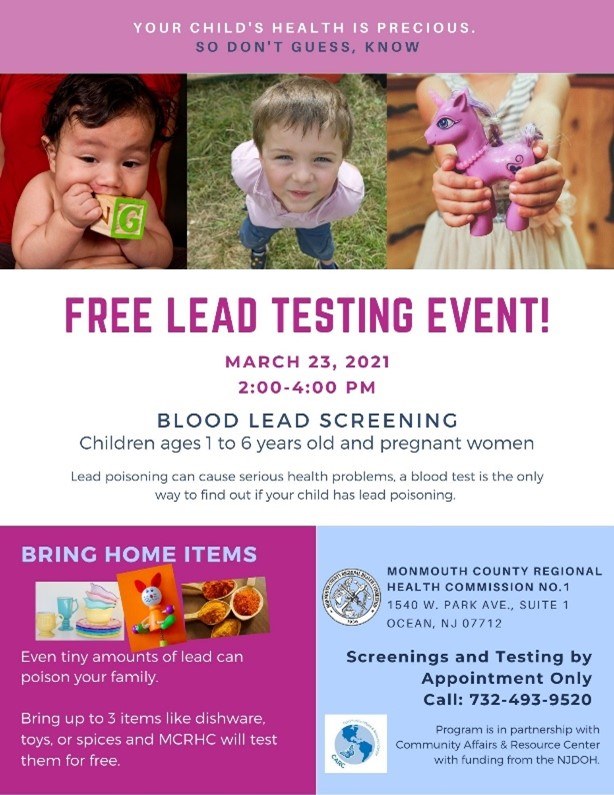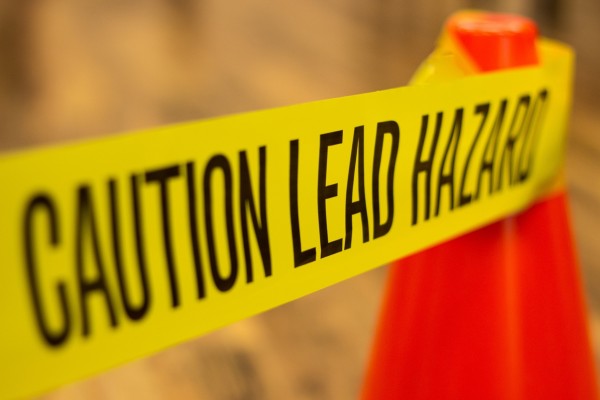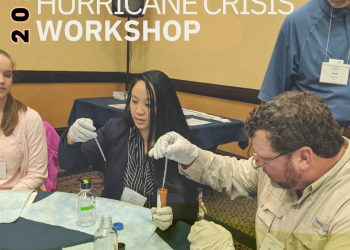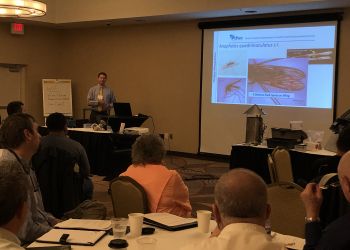Lead exposure remains a persistent childhood health issue and an indicator of environmental inequity in the United States. While lead exposure has declined substantially over the past few decades, there is no safe threshold for lead exposure and many children in the nation are still at risk.[1] Elevated blood lead levels are associated with a range of health effects from developmental delays to behavioral problems.[2] Children living in homes built before 1978 tend to be at the highest risk, which disproportionately includes children in low-income households. Non-Hispanic Black children may also be at higher risk given persistent racial inequities in access to safe housing.[3]
During the early months of the novel coronavirus (COVID-19) pandemic, states reported substantially fewer blood lead level screenings for children. The Centers for Disease Control and Prevention (CDC) estimates approximately 10,000 children with elevated blood levels may have gone untested during January-May 2020. [4] The full effect of the pandemic on childhood lead exposure prevention and treatment is still unclear, but the initial decline in reported screenings is a definite cause for concern.

Although the pandemic appears to have interrupted lead screenings, a renewed effort to increase testing and treatment can help reach children at risk of lead exposure. For example, the Monmouth County Regional Health Commission hosted a free lead exposure screening event in March 2021 where children aged one to six, as well as pregnant women, received blood lead screenings and common household items were tested for lead.
NACCHO Activities
In 2018, CDC’s National Center for Environmental Health and Agency for Toxic Substances and Disease Registry developed the Health in All Polices (HiAP) + Lead Collaborative. The HiAP + Lead Collaborative is supported by the National Center for Healthy Housing (NCHH), National Environmental Health Association (NEHA), the Association for State and Territorial Health Officials (ASTHO), and NACCHO. The goal of the Collaborative is to utilize the expertise of these four national partners to support health departments using HiAP strategies to address at least one of several childhood lead-related activities or outcomes (e.g., lead testing awareness, case management coordination, surveillance, implementation of BLRV).
The Collaborative was funded for two years, with support lasting an additional six months to the end of 2020 due to interruption from the COVID-19 pandemic response. Over the course of the project, the Collaborative supported a total of seven health departments, six local and one state health department. Health departments funded through the opportunity include Louisville Metro Public Health and Wellness, KY; Houston Health Department, TX; Allegheny County Health Department, PA; Boston Public Health Commission, MA; City of Cleveland Department of Public Health, OH; City of Milwaukee Health Department, WI; and Idaho Department of Health and Welfare.
Health departments funded by the HiAP + Lead Collaborative experienced many challenges and barriers during the project period due to COVID-19. Health departments were forced to limit or completely stop blood lead screenings and inspections, community outreach and engagement was interrupted due to social distancing mandates, and health department staff were reassigned from their normal duties to COVID-19 Response. Despite the challenges the grantees faced, they were able to find ways to restart inspections and screenings, work to engage community through virtual meetings and online surveys, and some have been able to resume their roles aimed at preventing and reducing lead exposure in communities.
Ultimately, the grantees and national partners produced several resources to highlight the work being done, including:
- In 2019, NACCHO developed a factsheet based on the Seven Strategies of HiAP focusing on Lead Poisoning Prevention work. Environmental Health Fact Sheet: Health Department Strategies for Implementing Health in All Policies to Reduce and Prevent Lead Exposure
- In 2019, NACCHO worked with the Louisville Metro Department of Public Health and Wellness to develop a factsheet detailing how the health department has incorporated their HiAP work in the office of health equity.
- In 2019, as part of NACCHO’s HiAP webinar series, which aimed at providing an open, informal space for dialogue and peer-to-peer sharing about challenges and best practices, a webinar was focused on how to utilize a HiAP Approach for Lead Poisoning Prevention.
- In 2021, as grantees of the HiAP + Lead Collaborative, Boston Public Health Commission joined the NACCHO Podcast Series to discuss the lead landscape in Boston and how the health department is working with other government agencies and non-profits to eradicate lead poisoning.
- In 2021, NACCHO and NCHH worked with teams in Boston, Cleveland, and Milwaukee and developed Stories from the Field highlighting the lead work being done in each of these communities as well has how they adjust with the COVID-19 Response.
Citations
[1] https://www.pewtrusts.org/-/media/assets/2017/08/hip_childhood_lead_poisoning_report.pdf
[2] https://www.cdc.gov/nceh/lead/prevention/health-effects.htm
[3] https://www.cdc.gov/nceh/lead/prevention/populations.htm
[4] https://www.cdc.gov/mmwr/volumes/70/wr/mm7005a2.htm?s_cid=mm7005a2_w
For more information about NACCHO’s HiAP work, contact:
Bridget Kerner, MS
Lead Program Analyst, NACCHO
[email protected]
Alix Ware, JD, MPH
Program Analyst, NACCHO
[email protected]






